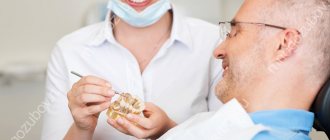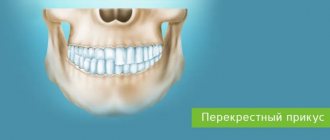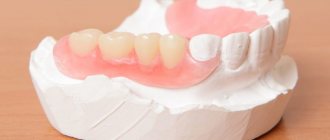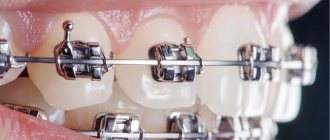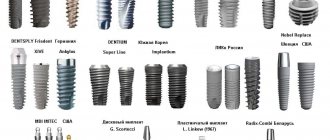Dental treatment is a complex of medical measures aimed at combating diseases of the teeth, oral cavity, jaws and border areas of the face and neck.
The relevance of the development of this branch of medicine is determined by the wide prevalence of pathologies of the dentofacial apparatus. According to official data, at least 90% of the world's population suffers from dental diseases. That is why health authorities are constantly tasked with developing measures to prevent dental diseases, studying their causes and improving treatment methods.
Therapeutic dentistry
Therapeutic dental treatment is reduced to eliminating the manifestations of dental diseases using conservative methods.
The following areas of development of this industry are identified:
- treatment of non-carious dental diseases (hypoplasia, fluorosis and enamel erosion, wedge-shaped defects, hyperesthesia and pathological abrasion of teeth, necrosis of hard dental tissues, injuries);
- fight against caries and its complications (pulpitis, periodontitis, periostitis);
- treatment of diseases of the oral mucosa (traumatic, infectious, symptomatic and specific stomatitis, glossitis, cheilitis, etc.);
- aesthetic restoration of teeth;
- dental hygiene.
It is worth noting that therapeutic sanitation of the oral cavity is the starting point for any dental procedures, both orthodontic or orthopedic, and surgical.
Periodontitis
Caries
Pulpitis
Wedge-shaped defect
Whitening
Many young people believe that white teeth are an important attribute of a beautiful face. However, naturally white enamel is quite rare, so the whitening procedure is popular. Although you can get good results with modern whitening methods, there are unscrupulous specialists who use harmful bleaching agents and ineffective folk methods that can harm the enamel.
There are two types of teeth whitening methods: professional and home.
Whitening at home is carried out using special whitening toothpastes and homemade products. Typically, home whitening is less effective than professional whitening.
Professional whitening is carried out using special equipment and comes in several types.
One of the most gentle whitening methods is ultrasonic. This type of whitening is quite effective and practically does not harm the tooth, but its cost is high compared to other methods.
Chemical whitening is highly effective , but this method has a large number of side effects and therefore it can only be recommended to owners of absolutely healthy teeth.
Whitening can be done very quickly using a laser, but this is not the safest method, which is also quite expensive.
Photo whitening is used for sensitive and diseased teeth. However, this method can lead to an unnatural color of the teeth, which is why this method is used quite rarely.
Surgical dentistry
So, surgical dentistry is one of the most significant and complex sections of modern medical science. Many people mistakenly believe that the competence of specialists in this field includes only performing simple tooth extraction operations. In fact, doctors of this profile perform a huge variety of different manipulations, ranging from tooth-preserving procedures to plastic surgery.
The competence of specialists in the field of dental surgery includes:
- treatment of inflammatory processes in the oral cavity (periostitis, periodontitis, osteomyelitis, abscesses, phlegmon, etc.);
- carrying out implantation;
- treatment of tumor diseases of the oral cavity;
- carrying out tooth-preserving procedures;
- treatment of pathologies of the temporomandibular joint;
- tooth extraction;
- combating diseases of the trigeminal nerve;
- performing operations on periodontal tissues;
- elimination of malfunctions of the salivary glands;
- primary treatment of wounds in the neck, face and oral cavity;
- carrying out reconstructive and plastic surgeries.
Dental surgery is directly related to such branches of medical science as implantology, orthodontics, orthopedics and aesthetic dentistry. This is why dental surgeons work closely with specialists in these fields.
Admission under compulsory medical insurance policy
Insured citizens of the Russian Federation have the opportunity to receive free medical care in the amount established by the Territorial Compulsory Medical Insurance Program.
The compulsory medical insurance policy is the main document confirming the fact of insurance of a citizen. When visiting the clinic for the first time, you must fill out an application for choosing a medical organization and provide a compulsory medical insurance policy and an identity document.
As part of the compulsory health insurance program, residents of all regions of Russia receive routine medical care. The “Moscow - Capital of Health” project helps nonresident patients obtain information about medical care in Moscow hospitals free of charge under the compulsory medical insurance policy. Additional information can be found on the official website of the Moscow Capital of Health project.
Orthopedic treatment in dentistry
Orthopedic dental treatment is a set of measures aimed at eliminating anomalies, deformations, damage and acquired defects of the dentofacial apparatus.
Methods used by orthopedic dentists to combat the above disorders include:
- removable and fixed prosthetics;
- microprosthetics;
- installation of combined prostheses.
Modern technologies allow dentists to produce any orthopedic devices in the shortest possible time. At the same time, dentures installed in the patient’s oral cavity do not cause him any physical discomfort or aesthetic inconvenience.
We invite you for health - a beautiful smile as a gift
Every person needs the services of a dental clinic.
Teeth are the only part of our body that does not have the ability to regenerate. If a tooth hurts or has decayed, it is impossible to restore the functionality of the dentition without the help of a specialist!
Contact us with any problem:
- Bad breath.
- Mobility of teeth.
- The presence of plaque and other dental deposits.
- The tooth hurts, throbs, twitches, aches.
- Increased sensitivity to hot and cold.
- Spots, cracks, chips and other defects appeared on the enamel surface.
- The tooth changed color, decayed, broke.
- The gums bleed, become red, swollen and painful.
- The tissue in the tooth area has swollen and changed color.
- A purulent discharge appeared from the tooth.
Do you want to have a perfect smile?
Come to us urgently! Our clinic provides a full range of professional care, while offering the lowest prices for dental services.
Orthodontic treatment
Orthodontic treatment is a complex set of medical measures aimed at eliminating dental anomalies. The competence of orthodontists includes the correction of aesthetic disorders and functional failures that arise during the formation of the masticatory apparatus (for example, genetically determined defects). The fight against pathologies that develop as a result of diseases or injuries is the responsibility of orthopedic dentists, surgeons and therapists.
Methods used in orthodontic treatment include:
- hardware (use of braces, retainers, etc.);
- surgical;
- functional (therapeutic gymnastics, etc.);
- combined.
Timely and competent course of therapy allows patients to get rid of dental deformations, malocclusions, abnormalities in the position of teeth and other pathologies.
Methods and means used in dental treatment are constantly being improved. Today, dental clinics use the latest equipment, advanced technologies and the highest quality materials, which allows you to speed up the treatment process as much as possible and minimize discomfort. Thanks to this, fear of visiting the dentist for most patients no longer becomes an obstacle to a beautiful, healthy smile.
Prosthetics and implantation
A lost tooth can be restored using implantation or prosthetics. After the loss of a tooth, it must be quickly restored, because if it is missing, the load on healthy neighboring teeth increases, which can cause their destruction. The appearance of the smile deteriorates.
Dental prosthetics are cheaper than implantation. In addition, after prosthetics there are almost no exacerbations. Thanks to the development of technology, it is now possible to make prosthetics with very little involvement of adjacent teeth. In some cases, it is possible to install a prosthesis on healthy teeth. This procedure is performed with minor surgical intervention and does not cause any discomfort . Such a prosthesis is almost impossible to distinguish by eye and the patient’s smile remains beautiful.
However, it should be noted that the functionality of the prosthesis is limited. For example, patients after prosthetics cannot eat solid food, as it can cause destruction of the prosthesis. It should also be taken into account that neighboring teeth are used to attach the prosthesis, which creates a load on them and can accelerate their wear. Under the prosthesis, the bone tissue atrophies.
Bridges need to be replaced every ten years.
Unlike dentures, implants can last quite a long time. a lifetime warranty on their products . In appearance, the implant is no different from a natural tooth. After rehabilitation, the patient can eat solid foods.
Along with the advantages of implantation, there are disadvantages. This procedure is more expensive than prosthetics. Sometimes there are cases of rejection of foreign material. Implantation is a fairly long procedure that can last up to twelve months . There are also many contraindications for this procedure.
Chronic heart, liver or kidney diseases may be contraindications for the implantation procedure. Diabetes mellitus is also a cause of implantation failure. The implantation procedure involves the use of medications, which is a reason to avoid this procedure during pregnancy, as this can negatively affect the health of the child. There are also other contraindications, so you should consult your dentist when visiting the clinic for dental treatment.
Causes of caries
Translated, the word “caries” literally means “rotting.” As we all remember from school biology courses, rotting is the decomposition of organic compounds under the influence of microorganisms. The human mouth contains natural microflora, which is responsible, in particular, for the process of the first stage of breakdown of food products. Under the influence of saliva, acidic enzymes necessary for digestion are released, which have a destructive effect on the enamel that protects the tooth.
If you neglect regular care, in other words, forget to brush your teeth, rinse your mouth after every meal, use dental floss, have a preventative hygiene cleaning with a doctor every six months, caries will immediately remind you of itself.
To determine the exact cost of treatment, sign up for a consultation or call one of the ILATAN clinics.
Cost of services
A-Medic Medical Center provides affordable dental services in Moscow. On the clinic’s website you can see the preliminary cost for all services. The exact price is announced only after consultation.
Our clinic offers favorable conditions for paying for expensive or “Dentistry on credit”, you can familiarize yourself with all the conditions for postpayment.
Pre-registration is available for each patient by phone or on the clinic website. Our center provides free consultation and treatment plan services. If you dream of a beautiful and healthy smile, we are waiting for you!
Other dental diseases: list of dental diseases with photos
Next, we propose to analyze ailments that may appear as a result of teething or age-related changes.
Grinding
A pathology in which there is a rapid decrease in hard tissue. Provokes thinning of enamel and damage to dentin. It can affect both individual units and full-fledged rows.
Erosion
A process in which a violation of enamel integrity is recorded. Some areas are damaged symmetrically. Main signs: changes in pigment, various cosmetic defects, painful reaction to cold or spicy food.
Pathological resorption
Loss of root tissue caused by chronic diseases, advanced periodontal disease or progressive pulp disease. It can be one-sided or combined. In the absence of rehabilitation and therapeutic therapy, tooth loss occurs.
Deposits and build-ups
They are mineralized residues that form above or below the gums. The main material for formation is food particles, the results of the activity of pathogenic microorganisms, as well as components of saliva. They trigger processes that provoke periodontitis.



